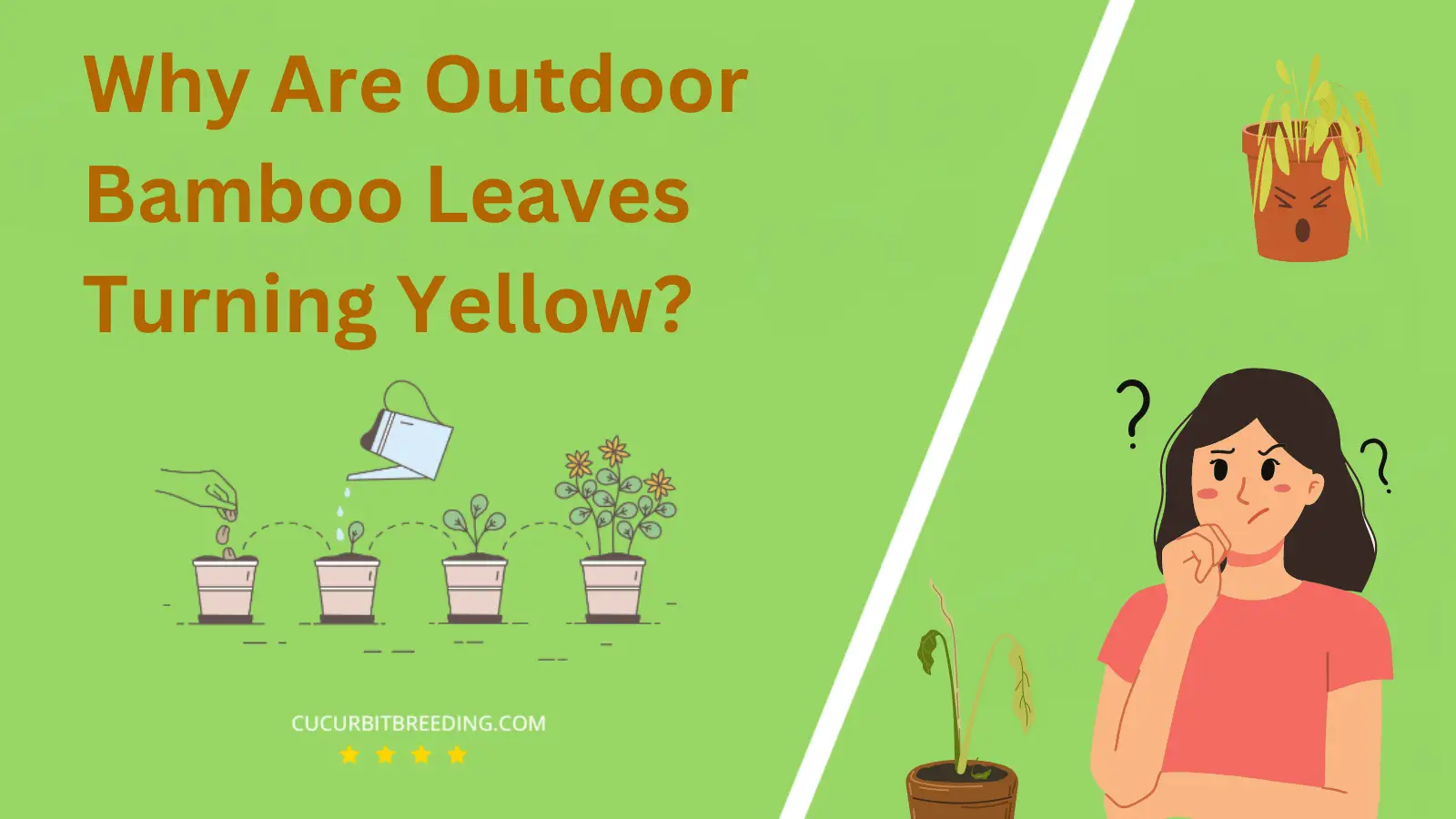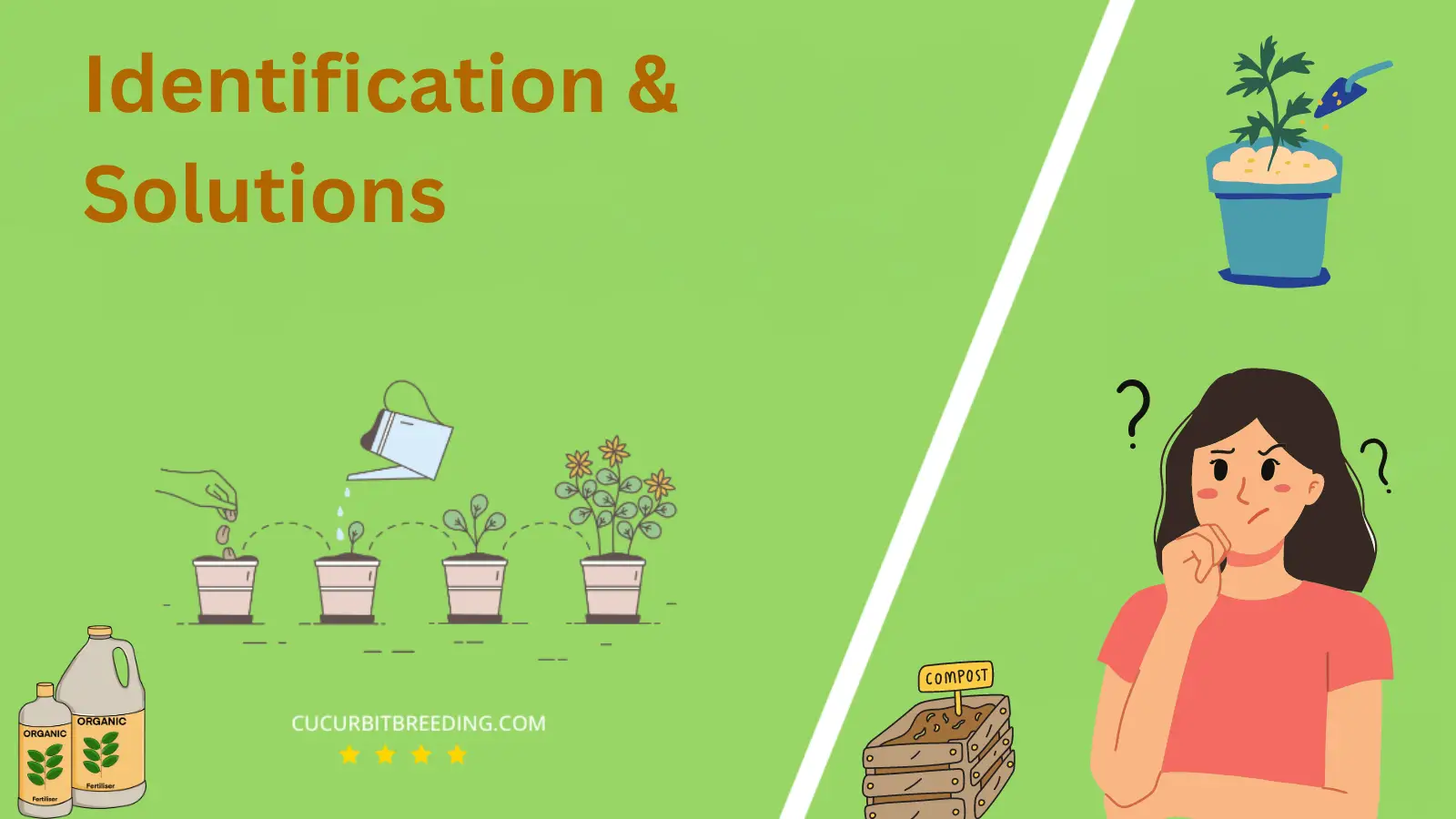
Outdoor Bamboo, known for its hardiness and rapid growth, can display disheartening signs of poor health. One of which is when their leaves take on a disconcerting yellow hue.
While this problem may seem challenging, understanding why this issue arises is key to resolving it. Keep reading to delve deep into the verdant world of bamboo plants as we investigate what could possibly lead to their leaf discoloration.
Why Are Outdoor Bamboo Leaves Turning Yellow?
1. Nutrient deficiencies
| Description | Cause yellowing leaves, such as lack of nitrogen, iron, or magnesium, and excess water. |
|---|---|
| Solution | Apply balanced fertilizer with nitrogen, phosphorus, and potassium to address nutrient deficiencies causing yellowing leaves. |
Outdoor bamboo leaves turning yellow may be due to nutrient deficiencies. Plants, including bamboo, need a variety of nutrients for their growth and overall well-being. When one or more of these nutrients are lacking, this can impact the bamboo’s ability to recharge its cells and perform photosynthesis optimally, progressively leading to yellow leaves.
Nutrient deficiencies can be resolved by applying a balanced fertilizer containing essential elements like nitrogen, phosphorous, and potassium. Apply the fertilizer to the soil around your bamboo in line with the manufacturer’s instructions. Regular watering can help the bamboo absorb these nutrients more effectively. Sometimes, the problem could be due to the soil’s pH levels disrupting nutrient uptake, so consider getting a soil test kit to verify its condition. If the soil is too alkaline or acidic, you will need to adjust it to suit your bamboo.
Remember to monitor your bamboo regularly after corrective actions, as recovery may take some time. If the yellowing persists, consult a local extension service or professional gardener to further diagnose the issue. This is integral as nutrient deficiencies might not be the only cause for yellowing leaves in bamboo plants.
2. Overwatering
| Description | Overwatering causes yellowing of outdoor bamboo leaves due to root suffocation and nutrient imbalance. |
|---|---|
| Solution | Reduce water and ensure proper drainage to prevent overwatering, allowing roots to breathe and absorb nutrients efficiently. |
Overwatering is a common reason behind yellowing leaves in outdoor bamboo plants. Bamboo plants require a moderate amount of water, and overwatering can lead to waterlogged soil and poor oxygen supply. This results in the yellowing of leaves as the plant struggles to photosynthesize effectively due to a lack of necessary oxygen.
Addressing overwatering involves adjusting your watering regimen to match the bamboo plant’s needs. Water deeply when the top inch of soil feels dry, ensuring the water reaches the roots, but avoid creating waterlogged conditions. Physically checking the soil around your bamboo can provide a good idea of when to water next.
Furthermore, proper drainage is essential, so ensuring your bamboo is planted in well-draining soil can help prevent waterlogging and subsequent yellowing leaves. Additionally, a layer of mulch can help maintain soil moisture levels and prevent overwatering.
Remember, consistency is key; try not to let the soil dry out completely between waterings, but equally, don’t allow it to become waterlogged either. With careful monitoring and adjustment, you should start seeing improvement in your bamboo plants after a few weeks. Healthy bamboo care practices will have your bamboo plants returning to a healthy green color in no time.
3. Underwatering
| Description | Insufficient water intake leads to yellowing of outdoor bamboo leaves due to dehydration. |
|---|---|
| Solution | Water the outdoor bamboo plant regularly to prevent underwatering and yellowing of leaves. |
Underwatering is a leading cause for bamboo leaves turning yellow. Why? Bamboo requires a consistent supply of water to maintain its vibrant green color and overall health. However, when it doesn’t receive enough water, the plant can become stressed. This causes the leaves of the bamboo to transform from their usual rich green hue to a pale, yellowish shade – indicating a deficiency in vital nutrients and moisture.
Solutions to Overcome Underwatering: Aim to provide a watering routine that maintains the soil moist but not waterlogged. During the growing season, water the bamboo deeply once or twice a week, allowing the water to reach the deep root system. In warmer months, it may be necessary to increase watering frequency as evaporation rates are higher. Using a thick layer of mulch around the base of the bamboo can also help the soil retain moisture. Regular monitoring of the bamboo plant for changes in leaf color or drooping can help identify underwatering early, and adjustments can be made accordingly. Regular and sufficient watering can encourage lush, green growth and prevent the leaves from turning yellow.
In conclusion, bamboo leaves turning yellow is often a sign of inadequate water supply, causing them to lose their natural green color. Regular, deep watering and adding mulch to maintain soil moisture can counteract this issue. Regular monitoring for signs of stress will also help keep your bamboo plant healthy.
4. Pest infestation
| Description | Insufficient water intake leads to yellowing of outdoor bamboo leaves due to dehydration. |
|---|---|
| Solution | Water the outdoor bamboo plant regularly to prevent underwatering and yellowing of leaves. |
Bamboo leaves can turn yellow due to pest infestation, particularly insects such as aphids, mites, and scale. These pests can suck out the sap from the leaves and disrupt the plant’s ability to photosynthesize, leading to a yellow discoloration.
To handle this situation, examine the bamboo for signs of pests. If you notice small insects or a sticky, honeydew-like substance on the leaves or surrounding areas, pests are likely the problem. Insecticides can be useful, but use them carefully. Generally, a more natural approach like introducing beneficial insects that eat the pests (like ladybugs or lacewings) can also be effective.
In more severe cases, pruning the infested parts of the plant can be helpful. After removing these parts, make sure to dispose of them properly to avoid re-infestation. Regular monitoring and care can also prevent further infections, keeping your bamboo healthy and green.

5. Disease or infection
| Description | Water the outdoor bamboo plant regularly to prevent underwatering and yellowing of leaves. |
|---|---|
| Solution | Apply fungicide to prevent and treat diseases, ensure proper watering and sun exposure for healthy growth. |
Yellowing of outdoor bamboo leaves can be symptomatic of disease or infection. This is a sign that the plant’s health is compromised. Diseases such as rust, leaf spot and bamboo mosaic virus can cause the leaves to turn yellow. Infections arise from various types of fungi, bacteria and viruses. These pathogens can infiltrate the plant’s tissue, disrupting normal cellular functions and nutrient absorption, and the leaves yellow as a result.
The solution to this involves a few steps. Initially, identify the type of disease or infection. Look for other symptoms like spots, mildew, or discolored patches to help in identification. After that, remove and properly dispose of all infected parts of the plant to prevent further spread. Consider using anti-fungal, anti-bacterial, or anti-viral treatments appropriate to the diagnosed condition. Typically, these are sprays or soil drenches. Lastly, ensure optimal plant health by providing the right growing conditions like proper watering, fertilization, and sufficient sunlight. A healthy plant has a better capacity to resist and recover from diseases and infections.
6. Sunburn or excessive sunlight exposure
| Description | causes chlorophyll breakdown, leading to yellowing of leaves. |
|---|---|
| Solution | Provide shade or move to a shaded area to prevent sunburn or excessive sunlight exposure. |
Bamboo plants are typically tolerant of many conditions but can be sensitive to extreme exposure to sunlight. This excessive light intensity can result in sunburn, which causes the bamboo’s leaves to turn yellow. This sunburn can damage the plant’s chlorophyll, which is responsible for its green color and ability to photosynthesize. Without healthy chlorophyll, the bamboo plant cannot produce enough energy necessary for its growth, leading to yellowing leaves and declining health.
To address this issue, the bamboo plant can be moved to a location with less direct sunlight, ideally where it can receive dappled shade throughout the day. Alternatively, a shade cloth can be used to protect the bamboo from the intense midday sun. Alongside, keeping the bamboo well-watered can help it recover from sunburn. However, care should be taken to not overwater, as bamboo is susceptible to root rot. Regular observation of the plant’s leaves will also help to quickly identify and deal with this problem if it occurs in the future.
7. Age or natural leaf shedding
| Description | The specific reason for a yellow leaf is the natural process of age or leaf shedding. |
|---|---|
| Solution | Provide proper nutrition and water to support healthy leaf growth and prevent premature shedding. |
The yellowing of outdoor bamboo leaves may be due to inadequate watering. Bamboo is a thirsty plant, and insufficient water can lead to dehydration, causing the leaves to turn yellow as the plant struggles to conserve water. This is because the bamboo is not able to properly photosynthesize and create the chlorophyll needed for green leaves due to lack of water.
To solve this problem, you should ensure that your bamboo plants are getting enough water. In dry periods, water your bamboo deeply and thoroughly to ensure that the soil is moist but not soggy. Regularly check the soil moisture levels to ensure they are optimal. An inch or two of mulch around the base of the plant can also help retain moisture. Always remember that both overwatering and underwatering can cause yellow leaves, so the key is balance.